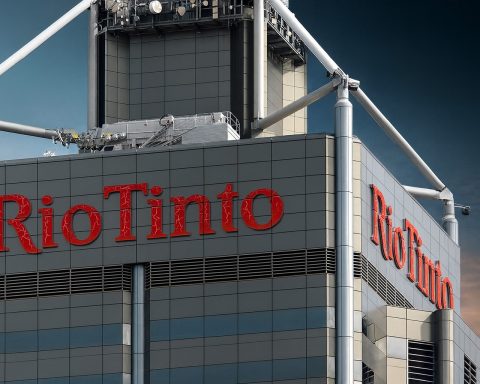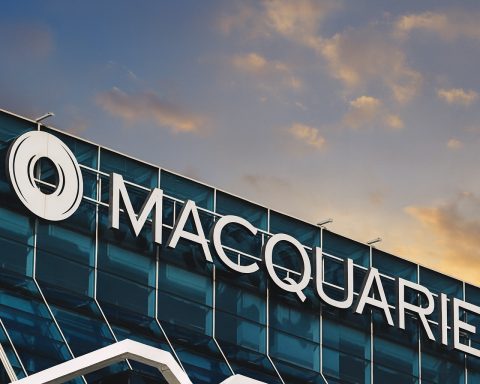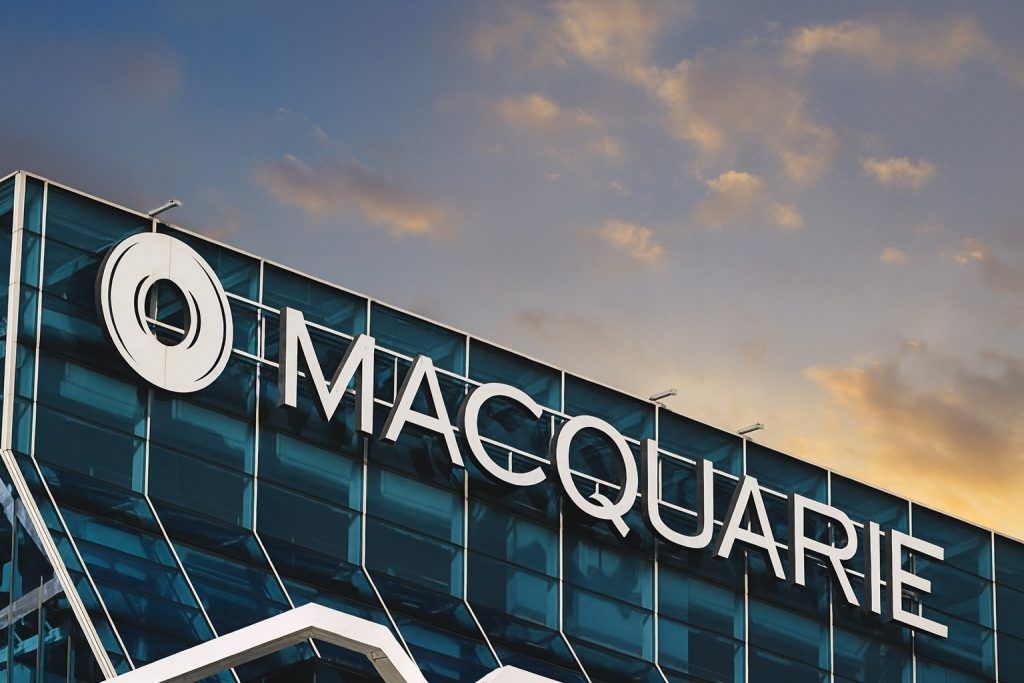BHP Group Ltd (ASX: BHP) shares are under pressure today, with the stock trading lower as investors react to fresh headlines out of China and a broader risk‑off mood on global markets.
As of Friday, 21 November 2025, BHP is trading around A$40.4–A$40.5 per share, down roughly 3% from yesterday’s close of A$41.72. That leaves the miner well below its recent highs but still modestly ahead of where it started the year. [1]
Below is a deep dive into where the BHP share price sits today, what’s driving the move, and what investors will be watching next.
BHP share price snapshot for 21 November 2025
Key numbers at the time of writing (ASX: BHP):
- Last traded price: about A$40.44
- Previous close (Thu 20 Nov 2025): A$41.72
- Approximate daily move: down A$1.28 (≈3.1%)
- Intraday range so far: roughly A$40.38 – A$40.67
- 52‑week trading range: about A$33.25 – A$44.55
- Market capitalisation: around A$212 billion
- Trailing dividend yield: ~4.1% on current prices [2]
According to data from Intelligent Investor, BHP’s “last” price used for performance calculations is A$40.53, putting the stock up about 5–6% in 2025 to date, but still well below its 2024 levels. The site also records a 2025 trading range between A$33.25 and A$44.55, underlining how volatile this year has been for the mining giant. [3]
In short, today’s drop pulls BHP Group’s share price back toward the lower half of its recent range, even though it remains comfortably above its 2025 lows.
What’s moving the BHP share price today?
Several storylines are converging on the BHP share price today (21 November 2025):
- China has expanded a ban on some BHP iron ore products.
- Global markets have flipped into risk‑off mode, hitting cyclical sectors like mining.
- Legal and ESG risks remain in focus after a UK ruling over the Samarco dam disaster.
- Analyst commentary is mixed but generally sees upside from current levels, especially versus more narrowly focused miners.
Let’s unpack each of these.
1. China expands its BHP iron ore ban
The biggest single headline for BHP today is the latest twist in its pricing dispute with China’s state iron ore buyer.
A Reuters report overnight – republished by outlets including Hellenic Shipping News and MarketScreener – revealed that China Mineral Resources Group (CMRG) has told steel mills and traders to stop purchasing BHP’s “Jinbao fines”, a lower‑grade iron ore product. [4]
Key points from that report:
- CMRG has instructed mills and traders not to buy new cargoes of Jinbao fines, adding to an earlier restriction on BHP’s Jimblebar Blend Fines introduced in September. [5]
- Buyers were reportedly given three days to stop taking Jinbao fines from ports, prompting concerns about short‑term port congestion and contractual friction. [6]
- The move comes amid tense negotiations over BHP’s 2026 contract terms, with CMRG using its centralized purchasing power to try to secure better pricing and conditions. [7]
Analysts quoted in coverage of the ban note that Jinbao fines represent a relatively small slice of seaborne trade, and that CMRG appears to be targeting narrower product streams to send a signal without completely destabilising the iron ore market. [8]
However, for BHP shareholders, the optics matter:
- The latest restriction reinforces the perception of a deepening stand‑off between BHP and its largest iron ore customer.
- It raises the risk that more products – or even broader cargo volumes – could be caught up if negotiations drag on.
- Even if the volume impact is manageable, the dispute adds uncertainty to future pricing and sales volumes into China, which still consumes the bulk of global seaborne iron ore. [9]
That combination of symbolism and uncertainty is a big reason why the BHP share price is weaker today, even though benchmark iron ore prices are holding up around US$104–105 a tonne.
2. Risk‑off Friday for the ASX weighs on BHP
Even without the China headlines, today was shaping up as a tough session for Australian equities.
An “ASX Today” wrap from TS2.tech highlights that SPI futures over the ASX 200 were down around 1.6–1.7% before the open, implying a drop of roughly 140 points and a start near the 8,420‑point mark. The article also notes that: TechStock²
- US markets reversed sharply overnight after an Nvidia‑fuelled rally,
- volatility indices spiked, and
- Bitcoin slumped, signalling a broader pullback in speculative risk appetite.
Within that context:
- Miners had been central to Thursday’s rebound on the ASX, helped by firm iron ore and copper prices. TechStock²
- On Friday morning, the same cyclical and high‑beta names – including big diversified miners like BHP Group – are among the first to be sold as traders de‑risk.
A separate “5 things to watch on the ASX 200” preview from The Motley Fool lists BHP Group Ltd (ASX: BHP)alongside major names such as ANZ Banking Group and Pilbara Minerals as key stocks likely to drive index performance today. [10]
Put together, it’s not surprising to see BHP’s share price underperform on a day when:
- the index is poised to fall,
- commodity‑exposed cyclicals are in focus, and
- BHP has its own company‑specific negative headline out of China.
3. Legal overhang: UK court finds BHP liable over Brazil dam disaster
Another factor still hanging over BHP – and mentioned in market commentary this week – is the recent legal ruling related to the 2015 Samarco dam collapse in Brazil.
A UK judge has found BHP liable in a massive group action brought by around 600,000 Brazilians and 31 communities, relating to the failure of a tailings dam at Samarco, BHP’s joint venture with Vale. Claimants are seeking up to £36 billion (about US$47 billion) in compensation, though the ruling so far covers liability only; the quantum of damages will be decided later. [11]
Key details:
- The judgment says the risk of collapse was foreseeable, and that BHP was sufficiently involved in the operation to bear responsibility. [12]
- BHP has said it intends to appeal and will update its financial provisions. [13]
- Reports noted that BHP shares fell more than 2% in London following the decision. [14]
While this ruling landed last week rather than today, it’s still very much part of the narrative investors are weighingas they decide how much risk premium to demand for BHP’s shares.
4. Fundamentals: strong operations, but iron ore still dominates
Today’s sell‑off comes despite BHP’s recent operational updates pointing to solid fundamentals across key commodities.
In its September‑quarter production report, BHP: [15]
- Reported Western Australia iron ore output of 70.2 million tonnes (100% basis), slightly below analyst expectations and down from 71.6 Mt a year earlier, mainly due to maintenance at Port Hedland.
- Maintained its fiscal 2026 iron ore guidance at 284–296 Mt, signalling confidence in medium‑term production.
- Delivered a 4% rise in copper production to about 493.6 kilotonnes for the quarter, benefiting from disruptions at competitor mines.
- Confirmed that Stage 1 of the Jansen potash project in Canada is around 73% complete, with Stage 2 about 13% complete and both progressing toward first production later in the decade.
CEO Mike Henry has repeatedly stressed that while China’s growth is cooling, the overall macro picture for commodity demand remains resilient, with global growth forecasts edging higher. [16]
At the same time:
- Iron ore still supplies the majority of BHP’s earnings, meaning any sustained disruption to Chinese sales or pricing will have an outsized effect on profits. [17]
- BHP’s push into copper and potash is designed to rebalance that dependence over time, but those projects won’t fully offset iron ore exposure for several years.
This is why markets are reacting so sharply today: the new CMRG ban doesn’t just affect a single low‑grade product; it signals how exposed BHP remains to Chinese policy and pricing power.
5. How today fits into BHP’s 2025 share price performance
Zooming out from the intraday moves, the BHP share price in 2025 looks like this:
- Calendar‑year performance:
- Starting price 2025: about A$39.50
- Latest price used for year‑to‑date stats: A$40.53
- Year‑to‑date gain: roughly +5.6%
- FY26 (to date):
- Starting price: A$36.64
- Last price: A$40.53
- Gain: nearly +13.9% [18]
Recent trading highlights:
- BHP closed A$41.72 on Thursday, after three choppy sessions that saw the price dip below A$41. [19]
- Today’s move toward A$40.4 takes the stock back to levels seen in early October and roughly 6–7% below where it was trading a week earlier, when it closed at A$43.33 on 13 November. [20]
So while BHP shares are in the red today, the big picture is that:
- The stock is still ahead of its 2025 starting point,
- but is well down from both its 2024 levels and its 2025 high around A$44.55. [21]
6. What analysts and commentators are saying about BHP today
Preference for diversified exposure
A fresh article on The Motley Fool Australia, published today, argues that investors in ASX mining shares should favour diversified resource exposure over pure iron‑ore concentration. The piece notes that, compared with some peers, BHP Group Ltd (ASX: BHP) offers broader commodity exposure and stronger long‑term positioning, particularly given its copper and potash growth pipeline. [22]
In other words, while BHP is currently in the cross‑hairs of China’s iron ore buyer, it may still be better placed than single‑commodity rivals to weather shifts in steel demand or Chinese policy.
Consensus valuation and upside
Real‑time data from Investing.com shows that: [23]
- The average 12‑month price target for BHP is about A$45.13, with a high estimate near A$48.38 and a low around A$39.63.
- That implies roughly 11–12% upside from today’s price zone around A$40.4, before factoring in dividends.
- The site classifies the overall analyst view as “Neutral”, with several firms rating BHP a buy but none currently recommending an outright sell.
- It also notes a trailing dividend yield of about 4.1%, supported by around A$1.71 per share in dividends over the past year. [24]
Of course, price targets are not guarantees; they change as commodity prices, earnings and macro conditions evolve. But they help explain why some investors view today’s weakness as an opportunity, while others see it as a warning sign about China risk.
7. BHP’s role in the ASX and global resources sector
A recent overview from Kalkine Media emphasises that BHP operates at the centre of the ASX resources ecosystem, with operations spanning iron ore, copper, coal, nickel and emerging resource‑development programs. The company is a major constituent of the ASX 200, ASX 300 and All Ordinaries, and its performance often sets the tone for the broader mining sector. [25]
In practical terms:
- When BHP’s share price falls, it tends to drag on index‑tracking ETFs and resource‑heavy portfolios.
- Its decisions on capital spending, decarbonisation and dividends ripple across suppliers, contractors and regional economies, from the Pilbara to Saskatchewan.
That structural importance is one reason why today’s news from China is being watched so closely – it’s not just about one company, but about how Australia’s largest miner navigates a shifting geopolitical and commodity landscape.
8. What to watch next for the BHP share price
For traders and long‑term investors alike, several catalysts could shape BHP’s share price over the coming days and months:
- Resolution of the CMRG dispute
- Any sign that BHP and China’s state buyer have reached a compromise on pricing or product specifications could quickly ease pressure on the stock.
- Conversely, further expansions of the ban or confirmation of broader cargo restrictions would likely keep a lid on rallies. [26]
- Iron ore price direction
- Today’s reports show iron ore still trading just above US$100 per tonne, helped in part by tighter supply of some grades, including those affected by the BHP‑China stand‑off. TechStock²+1
- A decisive move lower – perhaps driven by a deeper slowdown in Chinese steel output – would raise further questions about BHP’s near‑term earnings.
- Developments in the Samarco litigation
- Appeals, settlement discussions, and updates to BHP’s provisions for the Brazil dam case will directly affect perceptions of the company’s balance‑sheet risk. [27]
- Progress on copper and potash growth projects
- Markets will continue to monitor updates on copper output and the timeline and cost profile of the Jansen potash project, both of which are critical to BHP’s strategy of reducing reliance on iron ore. [28]
- Global risk appetite and ASX sentiment
- With volatility elevated and global indices struggling to sustain rallies, short‑term moves in BHP’s share price are also likely to track broader swings in appetite for cyclical, commodity‑linked stocks. TechStock²
9. Is BHP a buy, hold or sell after today’s move?
From a news perspective, today’s story is straightforward:
- The BHP share price is down on 21 November 2025,
- China has tightened restrictions on some of its iron ore products, and
- investors are reassessing the balance between near‑term risk and long‑term value.
Whether that makes BHP a buy, hold or sell depends on factors unique to each investor, including:
- risk tolerance and time horizon,
- views on China’s steel demand and policy direction,
- confidence in BHP’s copper and potash growth strategy, and
- the role of dividends and income in a portfolio.
Today’s analyst consensus suggests there is moderate upside potential from current levels and a still‑healthy dividend stream, but also meaningful risks tied to geopolitics, legal liabilities and commodity cycles. [29]
Final word
For now, BHP Group Ltd (ASX: BHP) remains one of the most closely watched stocks on the Australian market. On 21 November 2025, the focus is squarely on China’s expanding iron ore ban and what it signals about future pricing power and demand.
As always, the information above is general in nature and not personal financial advice. Before making any decision about buying, holding or selling BHP shares, it’s important to consider your own objectives, financial situation and needs, and to seek professional advice if necessary.
References
1. www.investing.com, 2. www.investing.com, 3. www.intelligentinvestor.com.au, 4. www.reuters.com, 5. www.reuters.com, 6. www.reuters.com, 7. www.reuters.com, 8. www.reuters.com, 9. www.reuters.com, 10. www.fool.com.au, 11. wtop.com, 12. wtop.com, 13. wtop.com, 14. wtop.com, 15. www.reuters.com, 16. www.reuters.com, 17. www.reuters.com, 18. www.intelligentinvestor.com.au, 19. www.intelligentinvestor.com.au, 20. www.intelligentinvestor.com.au, 21. www.intelligentinvestor.com.au, 22. www.fool.com.au, 23. www.investing.com, 24. www.marketindex.com.au, 25. kalkinemedia.com, 26. www.reuters.com, 27. wtop.com, 28. www.reuters.com, 29. www.investing.com







